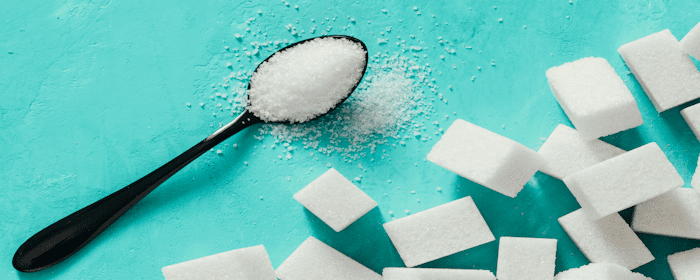Most people think of sugar as just something that affects weight or energy crashes, but it also has a deeper impact inside the body, particularly on inflammation. When sugar intake is high, it can trigger an internal chain reaction that makes the body more prone to joint discomfort, fatigue, swelling, brain fog, and slower recovery. The goal isn’t to eliminate sugar completely or follow a strict diet. Instead, it’s about understanding how sugar affects inflammation and making small shifts that support long-term health.
How Sugar Fuels Inflammation in the Body
When we consume excess sugar, especially repeatedly throughout the day, the body releases more insulin to manage rising blood sugar levels. Over time, this can lead to low-grade, ongoing inflammation, which may not show up as pain immediately but can gradually affect joints, energy levels, digestion, skin, and even mood.
Here’s what happens in simple terms:
- Sugar spikes = stress on the body, causing cells to produce more inflammatory signals.
- Frequent sugar intake keeps inflammation active, not allowing the body to return to a balanced state.
- The immune system gets involved, reacting to sugar-related stress the same way it reacts to irritation or injury.
- Recovery slows down, meaning the body has less energy for healing, tissue repair, and cellular regeneration.
Why You Don’t Have to ‘Diet’ to Make a Difference
Cutting down inflammation doesn’t require a restrictive diet, it simply takes awareness and gentle shifts in habits. Instead of focusing on cutting things out, think about adding in more supportive choices that keep blood sugar steady and inflammation lower.
You can do this by:
- Spacing out sugary treats instead of having them back-to-back throughout the day
- Balancing sweet foods with protein, fiber, or healthy fats to keep blood sugar more stable
- Staying hydrated, since dehydration can make inflammatory effects feel stronger
- Checking in with energy levels, noticing how certain sugary snacks make you feel an hour later
- Choosing “satisfying swaps” instead of complete removal, like fruit with almond butter instead of candy for a sweet craving
Signs Your Body May Be Reacting to Sugar-Related Inflammation
You don’t need a lab test to notice if sugar might be playing a role. Everyday signals the body gives include:
- Feeling puffy or swollen, especially in hands, face, or joints
- Energy crashes mid-day, even after eating
- Brain fog or difficulty focusing after sugary snacks
- Increased joint soreness after weekends or holidays with more sugar
- Skin redness, acne flare-ups, or feeling “inflamed” without a clear reason
Noticing these patterns is the first step in reducing inflammation gently, without strict rules.
Simple Shifts That Support Your Body’s Healing Ability
Instead of cutting sugar completely, try approaching it with balance:
- Enjoy sweets more intentionally rather than mindlessly snacking throughout the day
- Pair something sweet with a small amount of protein or fiber to soften sugar’s impact
- Take a 2–3 minute walk after a sugary snack or meal; movement helps your body use sugar more efficiently
- Shift your focus to nourishment, not restriction; what can you add to your day that makes you feel better, brighter, and more energized?
Even small changes like this can help the body experience less inflammation and feel more supported in healing and regeneration.
A Wellness-Focused Approach at Stemedix
At Stemedix, we believe true healing happens when medical innovation and everyday health habits work together. Regenerative medicine supports the body at a cellular level, but giving your body less inflammatory stress, like reducing sugar-driven inflammation allows those healing processes to work more efficiently. Our goal is to help patients feel empowered, not restricted, and to create a path to wellness that supports long-term vitality, mobility, and comfort.
If you’re interested in exploring how regenerative therapies and lifestyle awareness can work together to support your healing journey, Stemedix is here to guide you every step of the way.


 St. Petersburg, Florida
St. Petersburg, Florida
